HIPAA Compliance Checklist for 2025

In 2025, cloud computing powers innovation, scalability, and agility for businesses worldwide. However, with great power comes great responsibility, managing skyrocketing cloud costs. Gartner predicts global public cloud spending will hit $723.4 billion in 2025, with up to 35% of that wasted on inefficiencies.
In this guide, we explore the top cloud FinOps tools designed to help you reduce costs, improve efficiency, and make smarter, data-driven cloud spend decisions.
Managing cloud costs across platforms is challenging. To help, we’ve curated 10 top-rated FinOps tools that simplify spend tracking, forecasting, and optimization, whether for single or multi-cloud environments.
TL;DR
- Cloud Spend Is Exploding: Global public cloud spending will hit $723B in 2025, with up to 35% wasted due to inefficiencies.
- FinOps = Cloud Cost Control: FinOps blends finance, IT, and operations to track, optimize, and align cloud costs with business goals.
- Top Cost Drivers: Over-provisioning, shadow IT, multi-cloud complexity, and lack of visibility are the main culprits behind high cloud bills.
- What to Look For: The best FinOps tools offer real-time visibility, automation, multi-cloud support, forecasting, and seamless integrations.
- Best Tools for 2025: Platforms like CloudEagle, Economize, Finout, and CloudZero lead the pack in driving cloud savings at scale.
What is FinOps?
FinOps, short for Financial Operations, is a practice that combines financial management, cloud operations, and business strategy to optimize cloud spending, enhance cost visibility, and align resource usage with business goals.
It focuses on maximizing value from cloud investments through collaboration between finance, IT, and business teams, using data-driven insights and automation to control costs while maintaining performance and innovation.
Why Does FinOps Matter for Cloud Cost Management?
As cloud adoption grows, so does the complexity of managing costs. That’s where FinOps comes in. FinOps (Financial Operations) bridges the gap between finance, IT, and business teams to bring accountability, visibility, and control over cloud spending.
It ensures resources are used efficiently, costs are transparent, and spending aligns with business value, helping organizations avoid waste, stay within budget, and drive smarter cloud decisions at scale.
What is Cloud FinOps?
Cloud FinOps, or Cloud Financial Operations, is a cultural and operational framework that brings together engineering, finance, and business teams to manage cloud spending and maximize business value.
It's a collaborative approach focused on tracking, analyzing, and optimizing cloud costs while ensuring alignment with business objectives.
Key Features to Look for in a Cloud FinOps Tool
Choosing the best cloud cost optimization tools requires evaluating key capabilities:
- Cost Visibility & Allocation: Real-time dashboards for tracking cloud spend by team, project, or service.
- Anomaly Detection: AI-driven alerts to flag unusual spending patterns.
- Automation: Tools that automate cloud spend reduction through rightsizing, scheduling, or discount optimization.
- Multi-Cloud Support: Compatibility with AWS, Azure, Google Cloud, and Kubernetes.
- Granular Tagging: Custom tags for precise cost allocation and reporting.
- Forecasting & Budgeting: Predictive analytics to plan and prevent overruns.
- Integration: Seamless connectivity with DevOps, CI/CD, and BI platforms.
- User-Friendly Interface: Intuitive design for finance and engineering teams.
These features ensure cloud cost management software delivers actionable insights and measurable savings.
How Cloud FinOps Platforms Help You Optimize Spend?
FinOps tools are platforms that help organizations manage, optimize, and govern cloud spending by connecting finance, engineering, procurement, and FinOps teams around a shared cost model.
Unlike general cloud cost management or provider-native consoles that focus on usage and basic billing, cloud FinOps tools unify multi-cloud data, normalize costs, and translate technical consumption into business metrics.
They provide end‑to‑end workflows to monitor, allocate, and control spend so teams can make timely, data-driven decisions that tie cloud consumption to business value.
Key Capabilities to Look for in a FinOps Platform
- Real-time cost visibility across clouds, services, and accounts
- Accurate cost allocation using tags, labels, and business mappings
- Automation for rightsizing, scheduling, and managing commitments/discounts
- Anomaly detection to identify and control unexpected spend spikes
- Forecasting & budgeting to prevent overruns and plan future spend
- Governance & guardrails with policies and audit-ready reporting
What Each Team Gains
- Finance: Reliable budgets, chargebacks/showbacks
- Engineering: Actionable optimization insights without slowing delivery
- Procurement: Accurate usage data for smarter vendor negotiations
- FinOps: Clear standards, accountability, and cross-team alignment
Benefits of Using FinOps Tools
- Reduce cloud spend through rightsizing, autoscaling, and eliminating idle resources
- Cut compute costs with automated discount optimization (RIs, Savings Plans)
- Improve accountability with real-time cost allocation and chargebacks
- Prevent surprise bills using anomaly detection and automated alerts
- Strengthen governance with tagging standards, guardrails, and audit trails
- Accelerate budgeting with continuous forecasting by team, product, or service
- Automate optimization actions so teams spend less time analyzing and more time building
- Streamline renewals and avoid costly auto-renewals through centralized insights
FinOps vs. Traditional Cloud Cost Management: Key Differences
Traditional cloud cost management is reactive and siloed. Finance teams run monthly or quarterly reports based on historical spend, often using spreadsheets with limited visibility. This results in slow decisions, poor allocation, and cost optimization that’s disconnected from real usage or engineering needs.
FinOps, on the other hand, is a real-time, collaborative framework where engineering, finance, and procurement work together using shared data and automated insights to optimize cloud spending continuously. Modern FinOps platforms enable:
- Showback and chargeback: Unit economics tracking tying cloud consumption to business outcomes.
- Automated optimization: Rightsizing, commitment management, and license harvesting.
- Cross-team accountability: Ensures cost decisions align with organizational priorities.
Top 10 Cloud FinOps Tools to Manage and Reduce Cloud Spend
Several tools stand out as leading options for Cloud FinOps, offering capabilities to manage cloud costs effectively. CloudZero, CloudCheckr, and Apptio Cloudability are frequently cited as strong contenders, with each providing unique strengths in areas like cost visibility, security, and comprehensive cloud financial management.
Here’s our curated list of the Cloud FinOps tools for 2025, designed to optimize cloud cost management and drive efficiency:
CloudEagle.ai
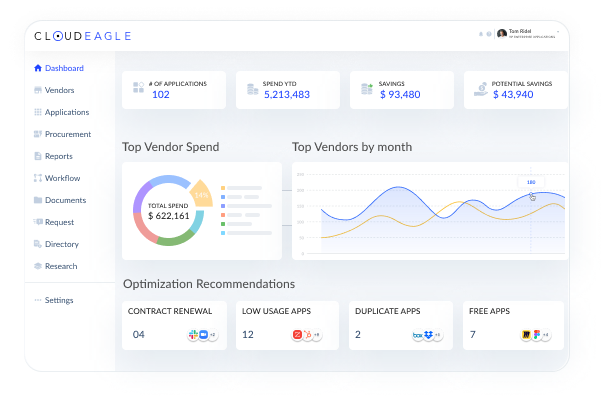
CloudEagle.ai is a leading cloud spend management platform that empowers finance teams to optimize cloud cost management and optimization with a focus on SaaS and cloud spending.
By providing unparalleled visibility, automation, and vendor negotiation support, CloudEagle has helped companies like RingCentral and Wefunder save 10-30% on software spend, processing over $2 billion in transactions and delivering $150 million in savings. Its AI-powered features streamline procurement, eliminate waste, and ensure every dollar spent delivers maximum ROI.
Key Features of CloudEagle:
Complete SaaS and Cloud Visibility:
With over 500 integrations, CloudEagle.ai scans your entire tech stack in minutes, identifying all applications, licenses, and vendor spend. This eliminates shadow IT by detecting unauthorized or underutilized apps, providing a single dashboard for finance teams to track cloud spend across departments, cost centers, and entities.
AI-Driven Cost Optimization:
CloudEagle’s AI analyzes usage patterns to pinpoint redundant apps, unused licenses, and overprovisioned resources. For example, it can identify if a team is overpaying for a premium plan (e.g., Mailchimp’s Premium at $279/month) when a lower tier ($13.96/month) suffices, saving thousands annually.
Automated License Harvesting:

The platform automates the reclamation of underutilized licenses, reallocating or downgrading them to optimize costs. This feature ensures finance teams avoid paying for unused or ex-employee access, streamlining cost savings tracking.
Vendor Negotiation and Benchmarking:
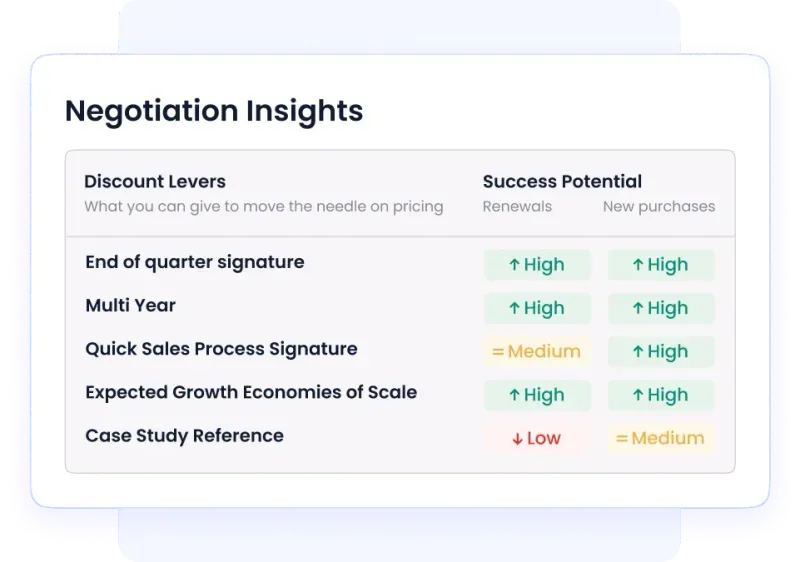
CloudEagle’s expert negotiators leverage a database of 150,000+ applications and pricing benchmarks to secure better vendor deals. Renewal alerts 90 days in advance give finance teams ample time to renegotiate or discontinue contracts, reducing auto-renewal risks.
No-Code Workflow Automation:
Slack-enabled workflows allow finance teams to manage approvals, procurement, and renewals directly from collaboration platforms. This reduces manual effort, ensures budget compliance, and speeds up decision-making.
Advanced Reporting and Forecasting:
CloudEagle provides detailed spend reports by department, user, or application, enabling accurate budgeting and forecasting. Finance teams can track ROI, monitor spending trends, and align budgets with business goals.
Seamless Integrations:
With 300+ connectors to tools like Coupa, Smartsheet, and SSO systems, CloudEagle integrates with existing finance and IT workflows, ensuring a hassle-free experience for cloud cost management.
Post-Merger Cost Optimization :
For organizations undergoing mergers, CloudEagle consolidates overlapping apps and provides entity-specific spend reports, helping finance teams save significantly by rationalizing the SaaS stack.
Security and Compliance:
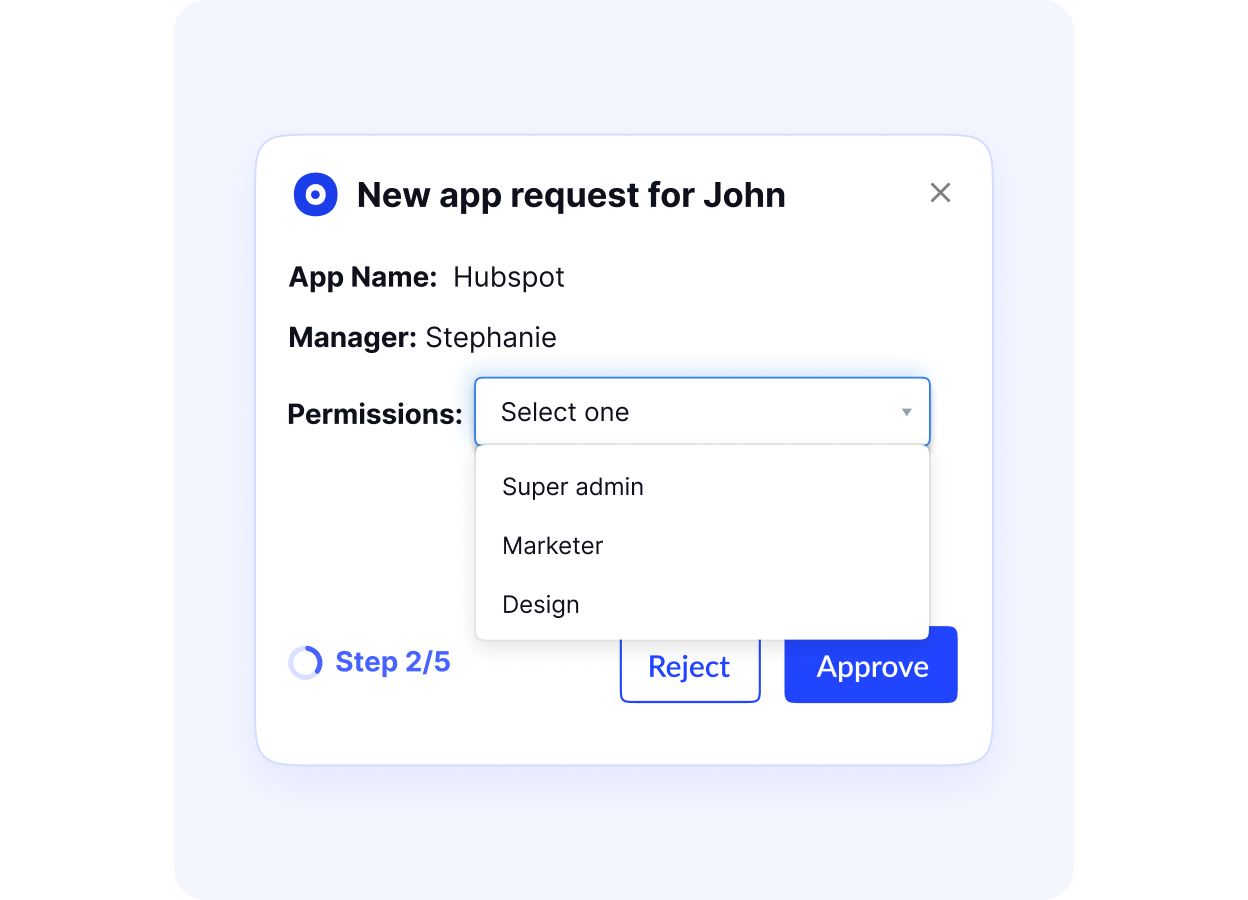
CloudEagle tracks app certifications and manages access risks, ensuring compliance with corporate standards and reducing security vulnerabilities from shadow IT.
Guaranteed Savings:
CloudEagle offers a savings guarantee, refunding fees if it fails to deliver cost reductions, making it a low-risk choice for finance teams seeking financial optimization tools.
Pros
- Transparent, publicly available pricing
- Modular plans, pay only for what you need
- Scalable pricing suited for growing teams
- Bundled discounts when combining modules
- Free trial available for evaluation
- Onboarding support included, no hidden setup fees
Cons
- ROI may take time to realize without high SaaS/tool volume
Pricing
- SaaS Management module starts at $2,500/month – includes license tracking, usage monitoring, renewals, and budgeting.
- SaaS Governance module starts at $2,000/month – covers onboarding/offboarding, access controls, and compliance workflows.
- SaaS Procurement module starts at $2,500/month – offers vendor negotiation support, price benchmarking, and procurement automation.
Bundle options:
- Management + Governance: $4,500/month
- Management + Procurement: $5,000/month
- Full suite (Governance + Management + Procurement): $7,000/month
Free trial available; onboarding support included in packages. Designed for mid-to-large enterprises with scalable, modular pricing.
2. Economize
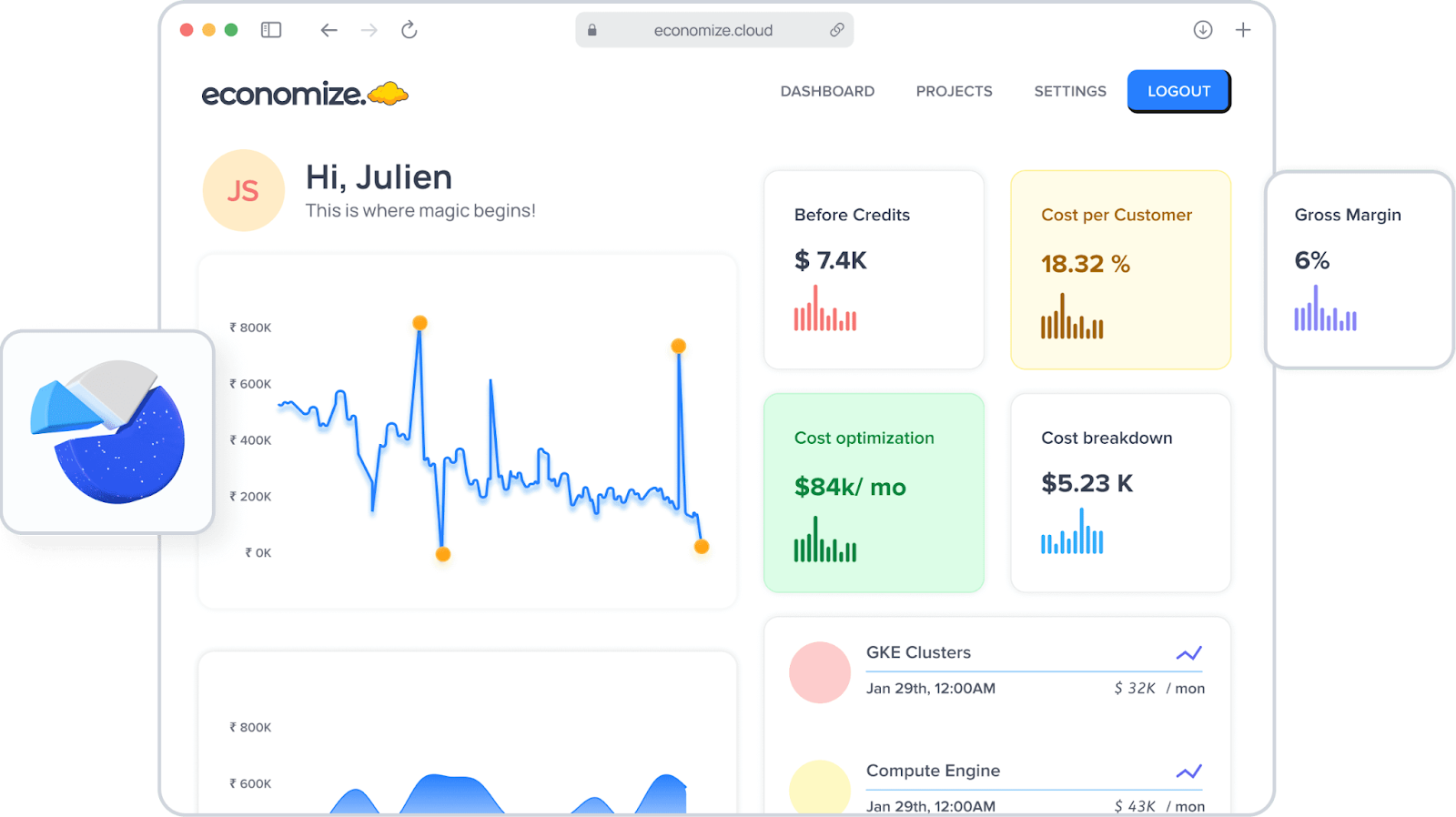
Economize is a leading cloud cost optimization service focused on AWS, Azure, and Google Cloud. Its AI-driven platform provides real-time cost visibility, anomaly detection, and automated optimization recommendations. With features like detailed cost allocation and Kubernetes support, Economize empowers teams to reduce cloud costs effortlessly.
Key Features
- Real-time cost visibility across AWS, Azure, and GCP
- AI-based anomaly detection and savings recommendations
- Kubernetes-native cost support
Pros
- Intuitive UI for quick adoption
- Strong multi-cloud analytics
Cons
- Lacks deep governance and policy enforcement tools
Pricing
- Starts at ~1% of cloud spend
- Flexible based on usage scale
- Free trial available for limited insights
3. Vantage
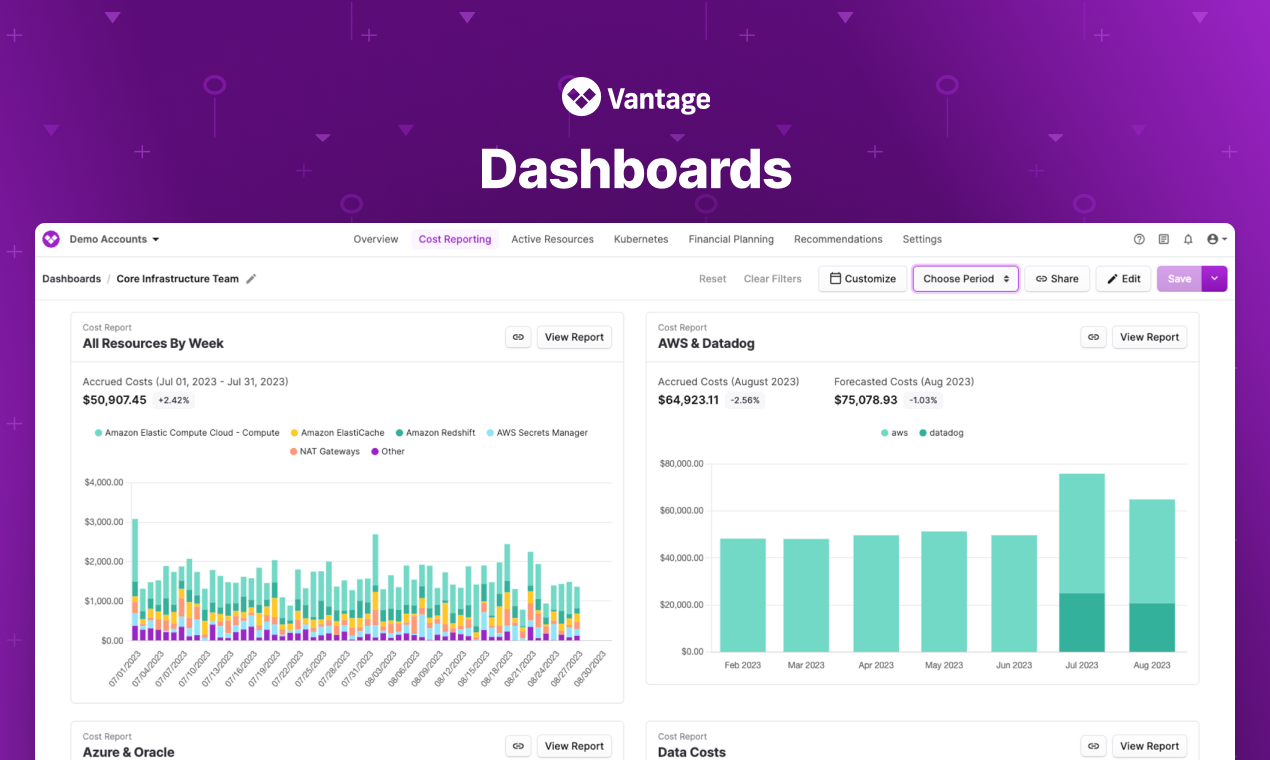
Vantage offers a unified cloud spend management platform with a focus on simplicity. It provides cost transparency across AWS, Azure, GCP, and SaaS apps like Datadog. Its intuitive dashboards and automated savings actions make it ideal for startups and mid-sized businesses.
Key Features
- Unified view of cloud + SaaS spend (AWS, Azure, GCP, Datadog)
- Automated savings and forecasting tools
- Tagging and budgeting support
Pros
- Simple onboarding and clean dashboards
- Great for startups and SMBs
Cons
- Not built for complex enterprise use cases
Pricing
- Tiered based on cloud spend
- Free tier available with limited features
- Paid plans scale as usage grows
4. CloudZero

CloudZero connects technical decisions to business outcomes, offering hourly cost insights across multi-cloud environments. Its cost savings tracking tool breaks down costs by feature or customer, making it a favorite for software-driven companies.
Key Features
- Hourly cost breakdown by team, product, or customer
- Deep integrations with engineering tools
- Business-level metrics for cost attribution
Pros
- Powerful cost insights for engineering-heavy orgs
- Supports real-time product decisions
Cons
- Learning curve for non-technical users
Pricing
- ~2–3% of monthly cloud spend
- Custom pricing for large orgs
- ROI-driven pricing model
5. Finout

Finout is an enterprise-grade FinOps solution with its MegaBill feature, consolidating costs across AWS, GCP, Azure, and Kubernetes. Its virtual tagging and anomaly detection ensure 100% cost allocation, making it a top choice for large organizations.
Key Features
- MegaBill: consolidated billing across multiple clouds
- No-code cost allocation with virtual tagging
- Anomaly detection and budget tracking
Pros
- Enterprise-grade visibility and allocation
- Works well without needing engineering input
Cons
- Higher cost for smaller teams
Pricing
- Transparent flat-rate pricing
- No surprise fees
- Custom enterprise plans available
6. ProsperOps
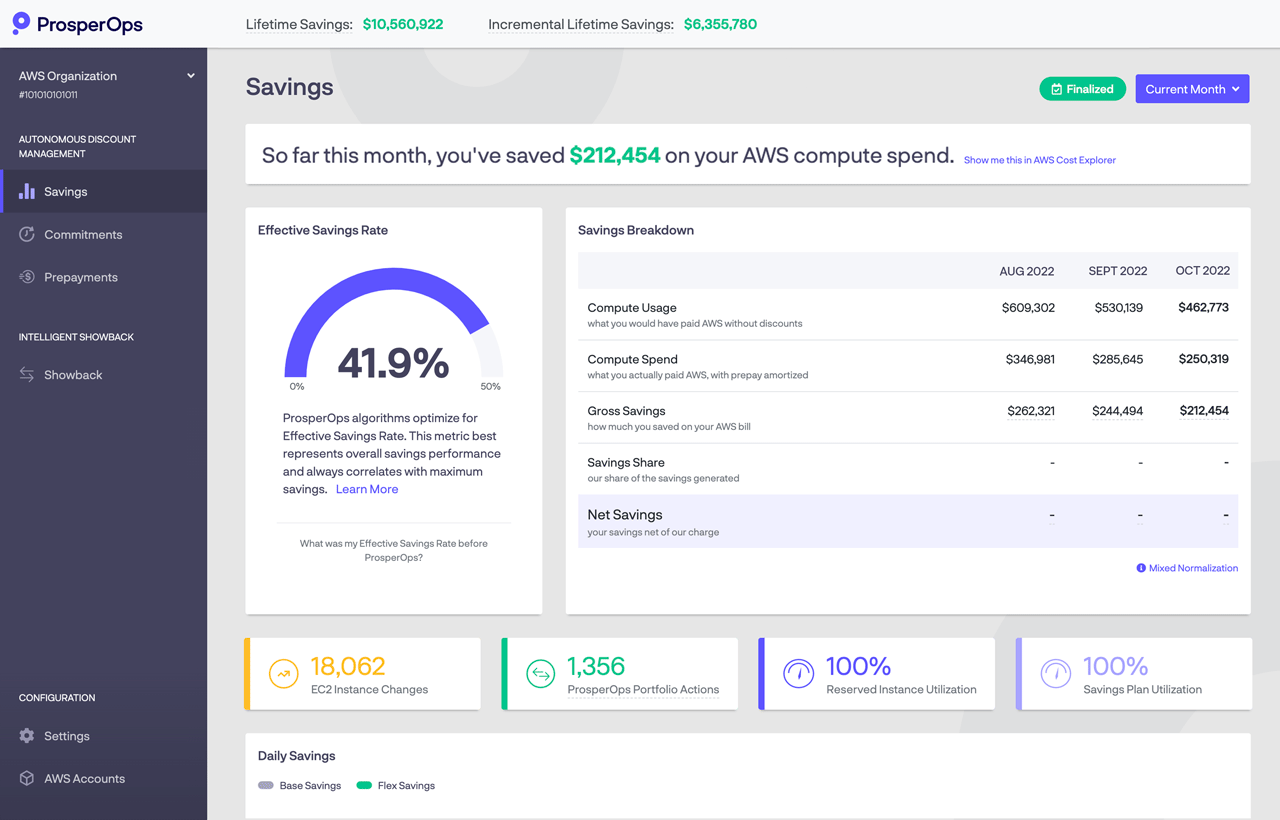
ProsperOps specializes in automating cloud spend reduction through commitment management. Its AI-driven platform optimizes AWS, Azure, and GCP discounts, delivering high savings with minimal risk.
Key Features
- Automated discount management (RIs & Savings Plans)
- AI-driven optimization for AWS, Azure, GCP
- Passive savings engine
Pros
- Hands-off savings approach
- Optimizes commitments with minimal effort
Cons
- Only focuses on commitment-based savings
Pricing
- Charged as a % of realized savings
- Performance-based, no savings, no fees
- No upfront cost
7. Flexera
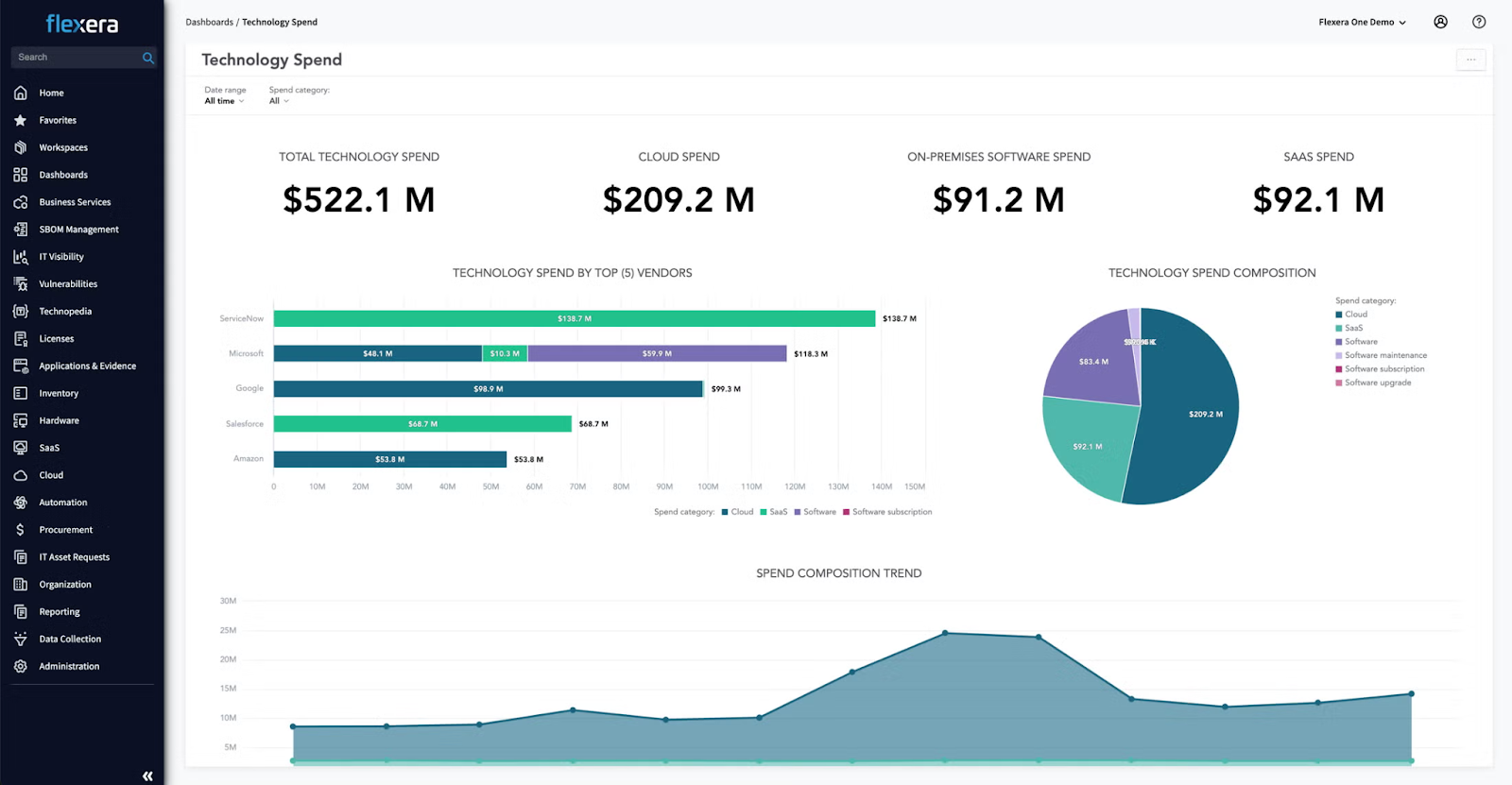
Flexera provides a SaaS cost managementsoftware solution with multi-cloud and hybrid reporting. Its actionable recommendations and commitment optimization make it ideal for enterprises seeking comprehensive cloud optimization software.
Key Features
- Hybrid + multi-cloud cost optimization
- Licensing and compliance tracking
- Actionable cost-saving insights
Pros
- Comprehensive enterprise tool
- Supports governance and compliance
Cons
- Complex for smaller or less mature teams
Pricing
- Custom pricing based on infrastructure scale
- Annual licensing model
- Premium support costs extra
8. Ternary
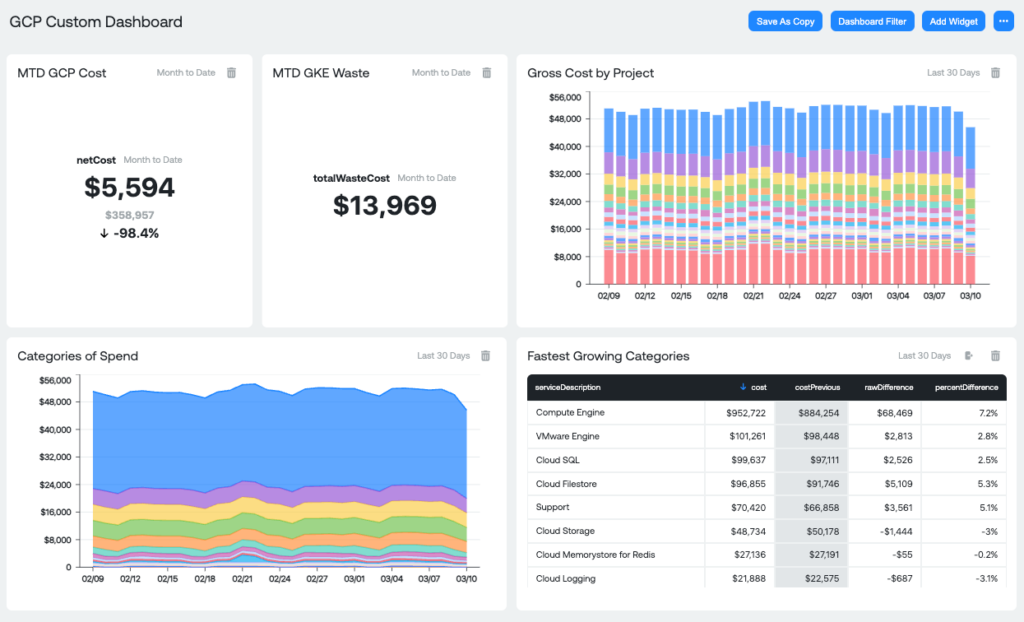
Ternary is a cloud-native FinOps tool designed for multi-cloud environments. It offers real-time analytics, cost allocation, and budgeting tools, with a focus on collaboration between finance and engineering teams.
Key Features
- Real-time dashboards for finance + engineering
- Cost allocation and budgeting across clouds
- Native GCP support with multi-cloud expansion
Pros
- Collaboration-focused UX
- Transparent cost breakdowns
Cons
- Limited automation and savings suggestions
Pricing
- Subscription-based pricing
- Requires direct contact for quotes
- Scales with usage and features
9. nOps
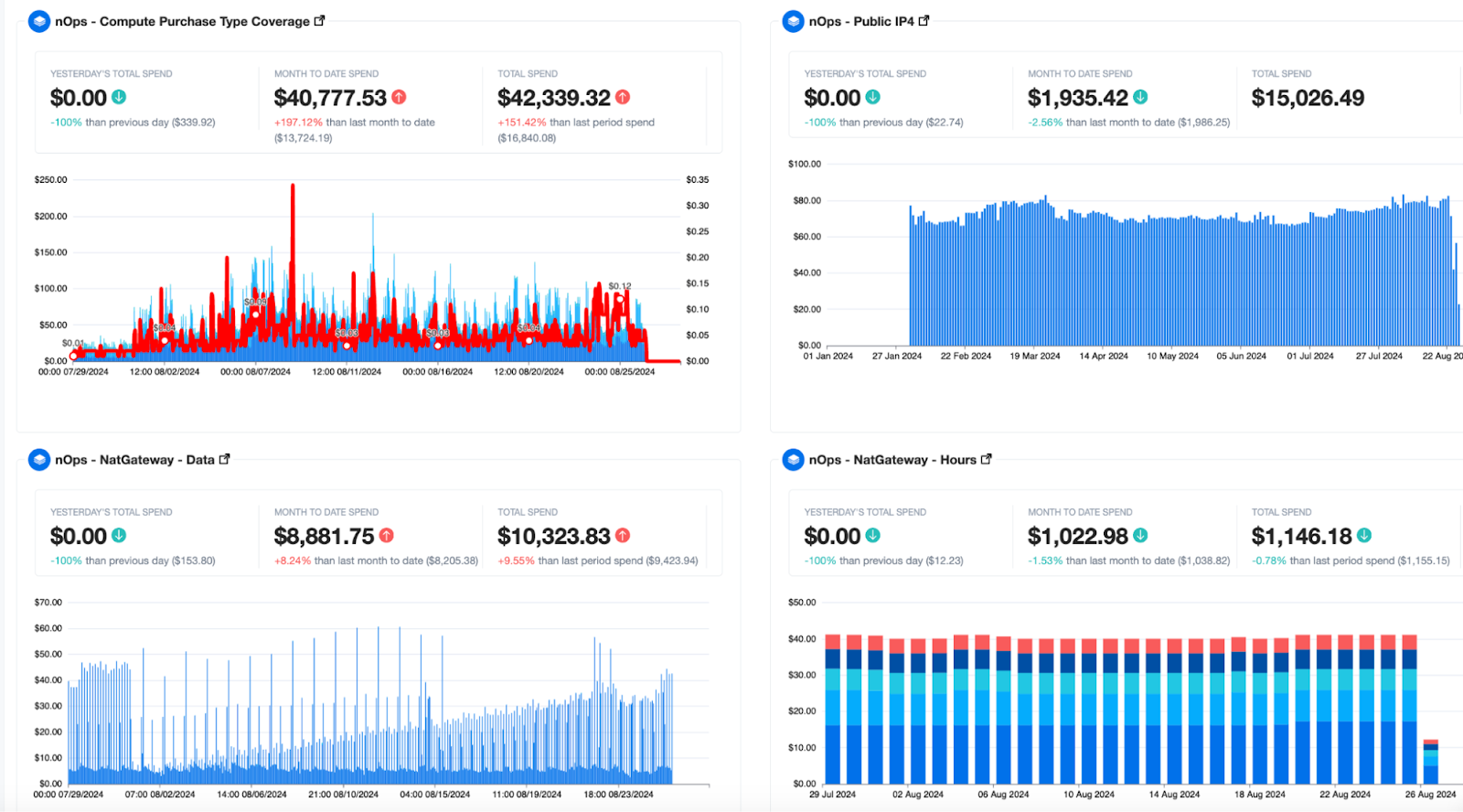
nOps is an ML-powered cloud cost management tool for AWS, offering automation for rightsizing, scheduling, and commitment management. Its Business Contexts feature ensures 100% cost allocation, making it a top pick for AWS users.
Key Features
- ML-powered automation (rightsizing, scheduling, RI/SP)
- “Business Contexts” for 100% cost attribution
- Native AWS integration
Pros
- Highly automated cost-saving tasks
- Reliable support and onboarding
Cons
- AWS-focused, limited for Azure/GCP users
Pricing
- Starts at ~1% of cloud spend
- No savings, no fee option available
- Scales with usage volume
10. Harness
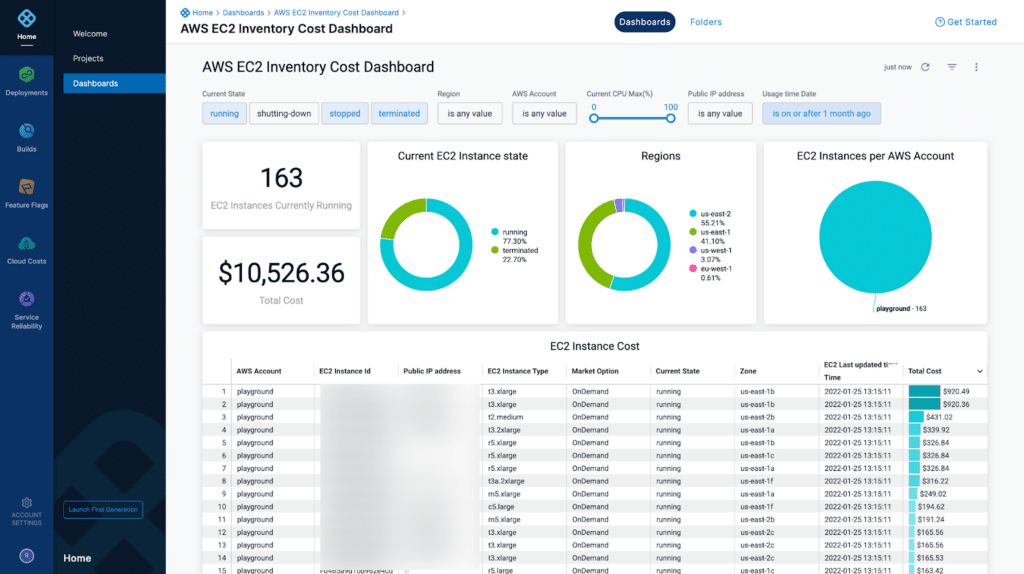
Harness integrates FinOps with CI/CD pipelines, enabling developers to optimize costs during development. Its cloud cost optimization tools focus on Kubernetes and multi-cloud environments, ideal for DevOps teams.
Key Features
- FinOps integrated with CI/CD pipelines
- Developer-first cost optimization tools
- Kubernetes-native support
Pros
- Ideal for DevOps and engineering teams
- Seamless within the software delivery workflow
Cons
- Lacks detailed financial reporting features
Pricing
- Custom pricing based on usage
- Modular pricing for FinOps module
- Contact for enterprise quotes
Common Causes of High Cloud Spend
Cloud costs can spiral out of control without proper oversight. Here are the primary culprits driving up expenses:
Over-Provisioning and Idle Resources
Over-provisioning, allocating more resources than needed, is a leading cause of cloud spend waste. Idle virtual machines, oversized databases, or unused storage racks up costs. Cloud optimization software helps identify and right-size these resources to reduce cloud costs.
Lack of Visibility Across Cloud and SaaS Spend
Without clear insights into cloud spend management, businesses struggle to track usage across departments or services. Cloud cost monitoring tools provide granular visibility, ensuring no dollar goes unnoticed.
Complex Multi-Cloud Environments
Many organizations use multiple providers like AWS, Azure, and Google Cloud, creating billing complexity. Multi-cloud cost management tools unify cost data, enabling seamless tracking and optimization across platforms.
Absence of FinOps Processes
Without FinOps practices, teams lack the framework to manage costs collaboratively. Cloud FinOps tools integrate budgeting, forecasting, and accountability to prevent overspending.
Shadow IT and Unmanaged SaaS Apps
Untracked SaaS subscriptions or unauthorized cloud usage can balloon costs. FinOps SaaS tools detect shadow IT, ensuring all spending is accounted for and optimized.
Which Cloud Cost Management Tools Are Best for You?
Selecting the best FinOps software for cloud cost optimization depends on your organization’s size, cloud architecture, and team priorities.
Small to mid-sized companies with single-cloud environments often succeed with provider-native tools like AWS Cost Explorer or Azure Cost Management, which provide basic optimization without extra licensing costs.
Enterprises managing multi-cloud infrastructure typically require full-suite FinOps platforms that normalize billing across AWS, Azure, and GCP while offering advanced allocation and governance features.
Considerations for choosing a FinOps tool:
- Team priorities: Finance teams need accurate chargeback, budget controls, and strong reporting; IT and Engineering teams require real-time visibility and automated rightsizing; Procurement teams benefit from vendor benchmarking and contract management.
- Specialized needs: Organizations with heavy Kubernetes adoption should explore tools like Cast AI for container-level optimization.
- Pricing models: Flat-fee plans suit predictable budgets, while percentage-of-savings models align vendor incentives with cost reduction goals.
- Tool focus: Commitment optimization tools like ProsperOps work well for steady-state workloads, whereas broader FinOps platforms excel in governance, anomaly detection, and cross-team collaboration.
What Are the Different Types of FinOps Platforms?
FinOps platforms generally fall into five categories. Understanding them helps you quickly select the top FinOps tools for managing cloud expenses and decide which FinOps software is best for cloud cost optimization in your environment.
- Full-suite FinOps platforms: End-to-end cost visibility, allocation, forecasting, and governance; best for multi-cloud enterprises needing centralized control.
- Cloud provider-native tools: Built-in AWS/Azure/GCP consoles for granular billing and basic optimization; ideal for single-cloud or early-stage FinOps.
- Commitment optimization tools: Automate RIs/Savings Plans/CUDs to maximize discounts; optimal for steady-state workloads with predictable usage.
- Kubernetes-focused optimizers: Workload-aware rightsizing, autoscaling, and node efficiency; best for container-heavy teams seeking unit-level savings.
- MSP-oriented solutions: Multi-tenant views, chargeback/showback, and policy enforcement; suited for service providers or centralized IT shared services.
Use these categories to shortlist the best FinOps software for cloud cost optimization 2025 among cloud FinOps tools.
How To Choose The Right FinOps Tool For Your Needs
Use this quick checklist to decide which FinOps software is best for cloud cost optimization and shortlist the top FinOps tools for managing cloud expenses in 2025.
- Cloud environment scope: single vs. multi-cloud and Kubernetes coverage.
- Required integrations: billing exports, data warehouse/BI, CI/CD, SSO, ITSM/ERP.
- Governance depth: policies, budgets, approval workflows, audit trails.
- Automation level: rightsizing, scheduling, commitment/discount management.
- Forecasting maturity: predictive models, scenario planning, unit economics.
- Team workflows: finance–engineering collaboration, alerts in Slack/Jira, ownership.
- Pricing model: fixed fee vs. % of spend or savings-based; total cost of ownership.
- Data granularity: tags/labels quality, account/project mapping, cost centers.
- Security/compliance: SSO/RBAC, SOC 2/ISO 27001, data residency, and access controls.
Run a Time-Boxed Pilot with Success Metrics
- Forecast accuracy vs. actual cloud spend
- Allocation coverage (tagging & unit economics completeness)
- Anomaly MTTR, mean time to detect & resolve cost spikes
- Automation-driven savings % from rightsizing & commitment management
- Stakeholder adoption and usability across engineering & finance teams
Multi-Cloud Management Tools For Every Need
Multi-cloud environments require specialized FinOps tools that normalize billing data across AWS, Azure, and GCP into unified dashboards.
The best FinOps software for cloud cost optimization in 2025 features cross-cloud tagging standardization, policy guardrails that enforce governance across providers, and granular Kubernetes cost allocation regardless of underlying infrastructure.
These platforms consolidate disparate billing formats, currencies, and service taxonomies into coherent cost views while maintaining native cloud optimization capabilities.
Why Choose CloudEagle.ai
CloudEagle.ai stands out as a full-suite platform that delivers all these capabilities. It provides unified visibility across SaaS and cloud, enforces governance policies, optimizes spend, and supports automated workflows, making it ideal for enterprises with complex multi-cloud and Kubernetes environments.
For team-specific priorities:
- Engineering: Real-time resource rightsizing and automated scheduling across clouds.
- Finance: Unified chargeback reporting and commitment optimization across providers.
- Procurement: Vendor-agnostic contract management and renewal orchestration.
Simple multi-cloud setups may rely on provider-native tools with third-party aggregation, but enterprises with heavy Kubernetes usage or extensive SaaS portfolios should invest in CloudEagle to gain advanced allocation, policy enforcement, and cross-cloud governance in a single platform.
Final Thoughts
In 2025, controlling cloud costs is mission-critical as multi-cloud environments grow more complex and spending accelerates. FinOps has shifted from reactive cost control to a core strategic capability.
A strong FinOps platform unifies finance, engineering, and procurement to drive accountability and measurable savings. Running a time-boxed pilot with metrics like forecast accuracy, allocation coverage, anomaly MTTR, and automation-driven savings helps validate the right choice before full adoption.
If you’re exploring FinOps solutions, CloudEagle.ai delivers unified cloud + SaaS visibility, automation-led optimization, vendor negotiation expertise, and guaranteed savings. Trusted by leaders like RingCentral, it helps reduce spend by 10–30%.
Book a free demo to see how CloudEagle can transform your cloud cost strategy.
FAQs
1. What is FinOps for cloud?
FinOps is a practice that aligns finance, engineering, and operations to manage and optimize cloud spending, ensuring cost efficiency and business value from cloud investments.
2. What are the three pillars of FinOps?
The three pillars are: Visibility (real-time spend insights), Optimization (rightsizing and cost efficiency), and Governance (policies, accountability, and cost allocation).
3. Is FinOps just for cloud spending?
Primarily, yes, FinOps focuses on cloud costs, but its principles of cross-team collaboration, accountability, and optimization can be applied to other IT or operational expenses.
4. What is the FinOps tool evaluation?
FinOps tool evaluation involves assessing software that provides cost visibility, usage analytics, forecasting, optimization recommendations, and integration with cloud platforms and finance systems.
5. What are the three main parts of the FinOps lifecycle?
The lifecycle includes Inform (track and report cloud spend), Optimize (reduce waste, rightsize resources), and Operate (establish policies, accountability, and continuous improvement).

%201.svg)







.avif)




.avif)
.avif)




.png)









